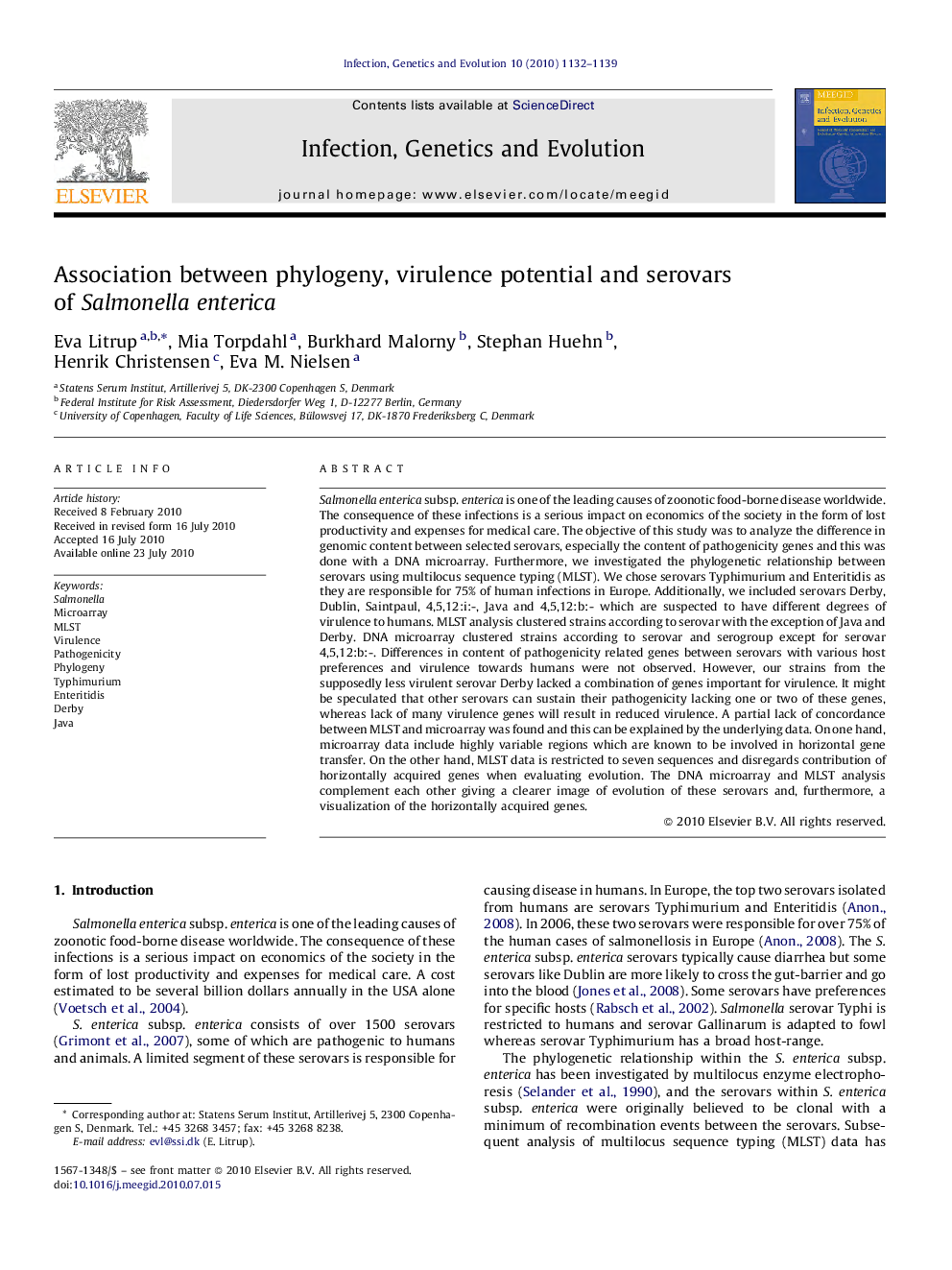| Article ID | Journal | Published Year | Pages | File Type |
|---|---|---|---|---|
| 2823226 | Infection, Genetics and Evolution | 2010 | 8 Pages |
Salmonella enterica subsp. enterica is one of the leading causes of zoonotic food-borne disease worldwide. The consequence of these infections is a serious impact on economics of the society in the form of lost productivity and expenses for medical care. The objective of this study was to analyze the difference in genomic content between selected serovars, especially the content of pathogenicity genes and this was done with a DNA microarray. Furthermore, we investigated the phylogenetic relationship between serovars using multilocus sequence typing (MLST). We chose serovars Typhimurium and Enteritidis as they are responsible for 75% of human infections in Europe. Additionally, we included serovars Derby, Dublin, Saintpaul, 4,5,12:i:-, Java and 4,5,12:b:- which are suspected to have different degrees of virulence to humans. MLST analysis clustered strains according to serovar with the exception of Java and Derby. DNA microarray clustered strains according to serovar and serogroup except for serovar 4,5,12:b:-. Differences in content of pathogenicity related genes between serovars with various host preferences and virulence towards humans were not observed. However, our strains from the supposedly less virulent serovar Derby lacked a combination of genes important for virulence. It might be speculated that other serovars can sustain their pathogenicity lacking one or two of these genes, whereas lack of many virulence genes will result in reduced virulence. A partial lack of concordance between MLST and microarray was found and this can be explained by the underlying data. On one hand, microarray data include highly variable regions which are known to be involved in horizontal gene transfer. On the other hand, MLST data is restricted to seven sequences and disregards contribution of horizontally acquired genes when evaluating evolution. The DNA microarray and MLST analysis complement each other giving a clearer image of evolution of these serovars and, furthermore, a visualization of the horizontally acquired genes.
